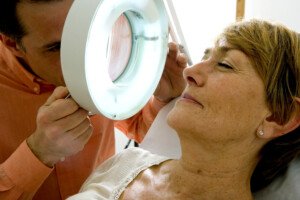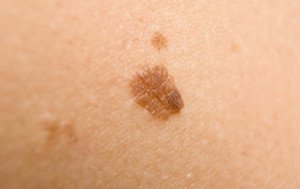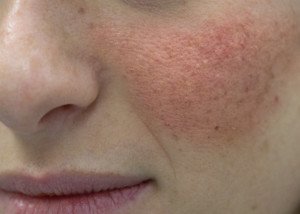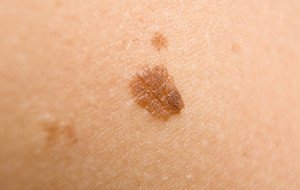
Sun spots mean there’s been damage to the skin. Whether or not these might one day transform into melanoma is a fair question.
“While sun spots do not automatically mean skin cancer, people with sun spots are at an increased risk” of melanoma, says Dr. Michael Shapiro, MD, Medical Director and Founder of Vanguard Dermatology in NYC, NY.
Just what is a “sun spot” anyways?“
Sun spots are a result of sun exposure and darken the skin area which also increases its absorbency to UV rays,” continues Dr. Shapiro.

“It is possible for sun spots to become cancerous, so make sure to get these checked if you have any concerns.”
This is a layman’s term that can have more than one meaning.
For example, if you’ve ever seen tan or brownish spots on an elderly person’s hands and forearms, you may have thought of these as sun spots that have accumulated over time, though these are actually more often referred to as age spots.
As people approach 40 and beyond, and even in their 30s, they may begin developing tan to light brown colored spots or speckles on their face — the result of cumulative sun damage in their earlier years that’s finally manifesting itself. Sometimes these are referred to as sun spots.
The term “sun spots” has also been used to refer to a type of skin problem called actinic keratosis, which is quite common in people over 40. This is also known as solar keratosis.
It’s sun damaged skin; the cells are atypical. Actinic keratosis, left untreated, has about a 10 percent chance of turning into cancer — but not the melanoma type.
The skin cancer that the actinic keratosis “sun spot” can turn into is squamous cell carcinoma.
A true sun spot cannot become the melanoma type.
Check with your dermatologist to find out if the lesions on your skin are actual sun spots, freckles, liver spots, age spots, actinic keratoses, etc.
Actinic keratoses, however, almost always are not tan or brown.
They’re pink or reddish, and when you glide your fingertip over these splotches, they feel kind of like sandpaper. They should be removed.
 Dr. Shapiro is a board certified dermatologist and Mohs surgeon and has treated over 12,000 Mohs cases for skin cancer. He is widely published in peer-reviewed academic journals.
Dr. Shapiro is a board certified dermatologist and Mohs surgeon and has treated over 12,000 Mohs cases for skin cancer. He is widely published in peer-reviewed academic journals.
 Lorra Garrick has been covering medical, fitness and cybersecurity topics for many years, having written thousands of articles for print magazines and websites, including as a ghostwriter. She’s also a former ACE-certified personal trainer.
Lorra Garrick has been covering medical, fitness and cybersecurity topics for many years, having written thousands of articles for print magazines and websites, including as a ghostwriter. She’s also a former ACE-certified personal trainer.
.









































